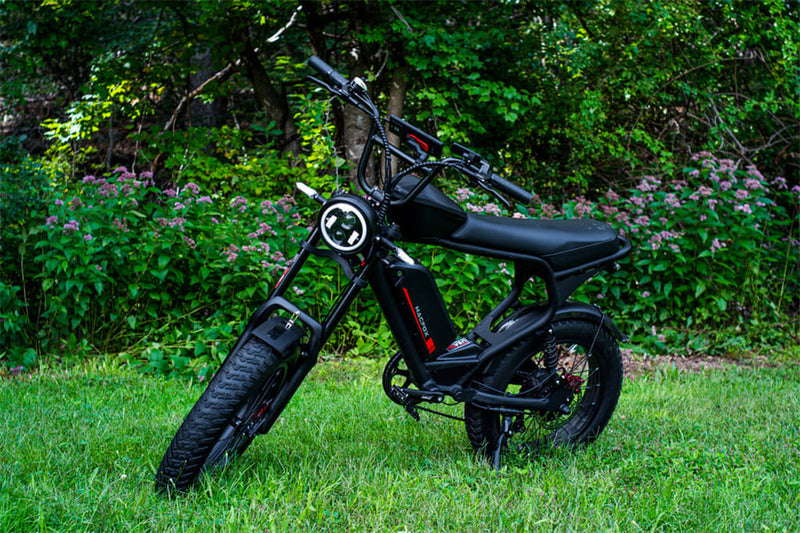E-bikes, commonly known as e-bikes, are widely praised as pioneers in environmentally friendly transportation. These inventions combine cutting-edge technological advancements with ecological awareness to provide a richer alternative to traditional motor vehicles. This comprehensive paper delves into the energy complexities of e-bikes, compares them to cars, and illustrates the many benefits of electric propulsion.
Decoding E-Bike Energy Usage
E-velocepedes are propelled by electric motors, drawing power from batteries, thus obviating the necessity for petrol. Their energy utilization is contingent upon the electricity expended in recharging these power cells. To grasp this more thoroughly, we shall examine the various aspects of an e-bike's energy requirements:
- Battery Varieties and Capacities: E-velocepedes predominantly utilize lithium-ion cells, renowned for their formidable energy concentration and durability. These cells vary in capacity, typically spanning from 250Wh to 1000Wh, to accommodate diverse needs and utilization patterns.
- Motor Efficacy: The nucleus of an e-bike is its motor, noted for its efficacy. These engines are capable of transmuting over 80% of electrical input into mechanical force, a considerable advantage over traditional internal combustion engines.
- Charging Dynamics: The time it takes to charge an e-bike battery depends on its capacity and the output of the charger, but is typically 3 to 6 hours. The cost of fully charging an e-bike is much lower than refueling a car.
Electric Bikes Vs. Cars: A Comparative Study
Putting the energy consumption of electric bicycles and cars together, the following insights can be drawn:
- Car Fuel Efficiency: On average, cars get about 50 to 80 miles per gallon. However, the cost of gas far exceeds the cost of electricity for an e-bike.
- E-Bike Energy Equivalence: Transposing the electrical usage of e-bikes into a petrol equivalent reveals an astounding fact – e-bikes are exceedingly more efficient, equating to hundreds of miles per gallon in energy expenditure.
The Environmental Angle
The shift from petrol to electric transcends mere efficiency – it's a significant move towards preserving our environment.
- Minimizing Carbon Footprints: E-bikes are pioneers in eco-friendly travel, devoid of any tailpipe emissions. This significantly contributes to purer air quality and a decrease in greenhouse gas emissions.
- Advantages of Renewable Energy Sources: The possibility of powering e-bikes with renewable energy, such as solar or wind, further bolsters their ecological credentials.
- Solving Urban Dilemmas: E-bikes are especially beneficial in urban environments, addressing issues like traffic congestion and noise pollution. Their compact form and silent operation render them an ideal solution for city commuters.
Related Reading: Tracing the History of E-bikes
Cost-Benefit Analysis: Is an E-Bike Worth It?
Opting for an e-bike involves a consideration of its financial implications.
- Initial Expenditure vs. Long-Term Economies: Although e-bikes generally require a higher initial investment than traditional bicycles, they can save a lot of money in the long run. These savings result from reduced maintenance requirements and minimization of operating expenses, especially compared to automobiles.
- Incentives and Fiscal Benefits: Numerous governments incentivize e-bike acquisitions through subsidies or tax deductions, substantially reducing the effective ownership cost.
Technological Progress in E-Bikes
Continual technological progress is further enhancing the allure of e-bikes. Innovations like the Macfox X1 electric commuter bike epitomize the forefront of e-bike technology.
- Spotlight on the Macfox X1: The Macfox X1 represents the zenith of current e-velocepede technology. It features an elegant design, robust battery life, and a sophisticated motor system, making it an optimal choice for urban commuters and leisure riders alike.
- Battery Innovations: The Macfox X1 is equipped with a high-capacity lithium-ion battery, ensuring extended range and durability. This mirrors the trend towards more enduring and swiftly recharging batteries, augmenting the overall user experience.
- Motor Enhancements: The bicycle is fitted with a top-tier motor that provides efficient power, guaranteeing a smooth and responsive journey. This reflects the broader trend of more potent and efficient e-bike motors.
- User-Focused Features: The Macfox X1 is designed with the cyclist in mind, incorporating features such as intuitive controls, multiple riding modes, and a digital display, all contributing to a safer and more pleasurable riding experience.
Macfox X1
$999.00 – $1,497.00Concluding Thoughts
E-bikes stand out as an effective, eco-friendly, and economical alternative to traditional gasoline-powered transportation. With their minimal environmental impact, reduced operational costs, and ongoing technological advancements, they represent a viable and sustainable option for diverse settings.
FAQs
Q1: How much does it cost to charge an electric bike?
Charging an electric bike is significantly cheaper than refueling a gas-powered bike. The cost varies based on local electricity rates but is generally a few cents per charge.
Q2: What is the range of an electric bike on a single charge?
The range varies based on battery capacity, but most e-bikes can travel between 25 to 70 miles on a single charge.
Q3: Are electric bikes environmentally friendly?
Yes, electric bikes are environmentally friendly. They produce zero tailpipe emissions and can be charged with renewable energy sources.

















